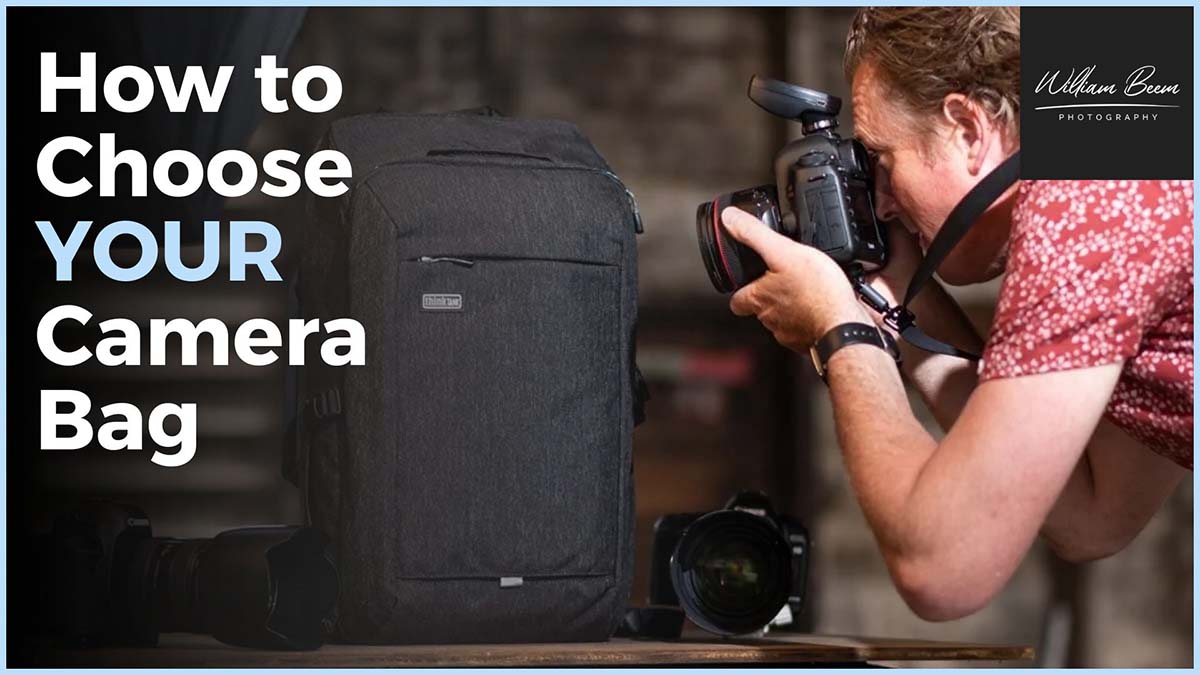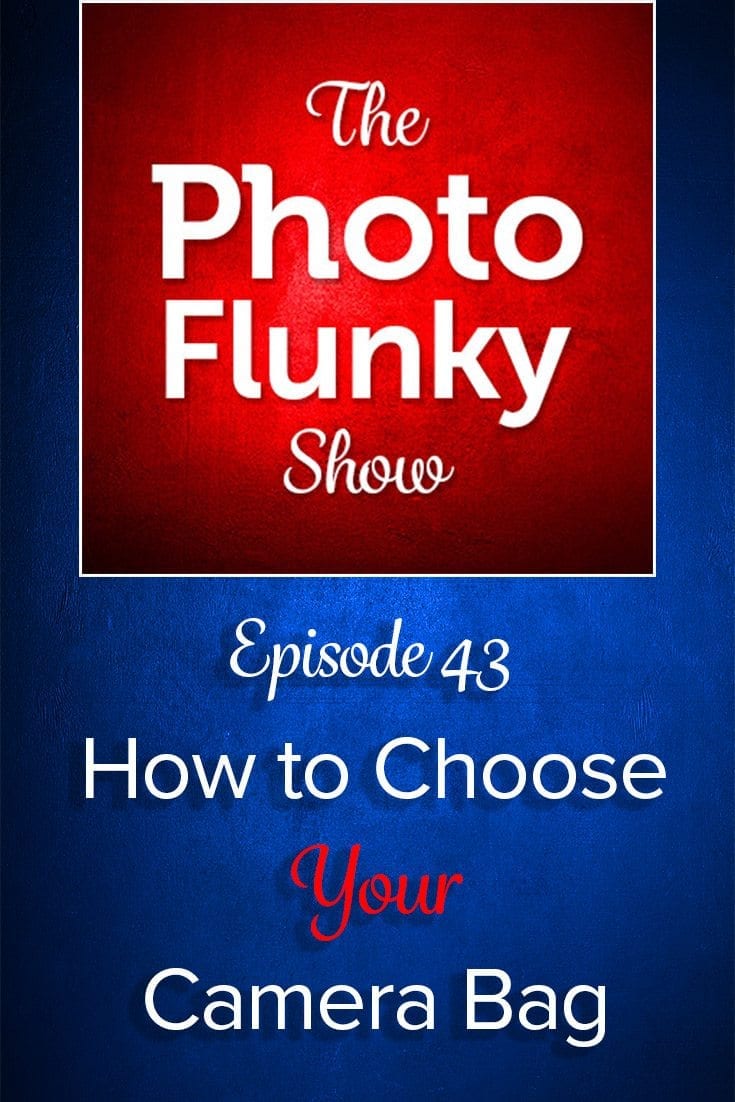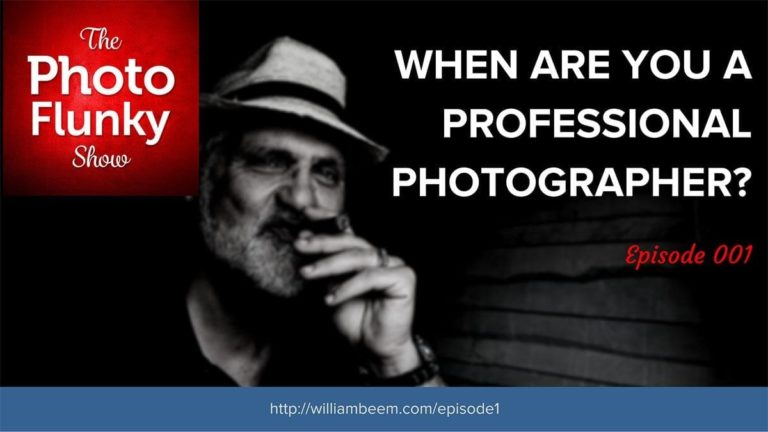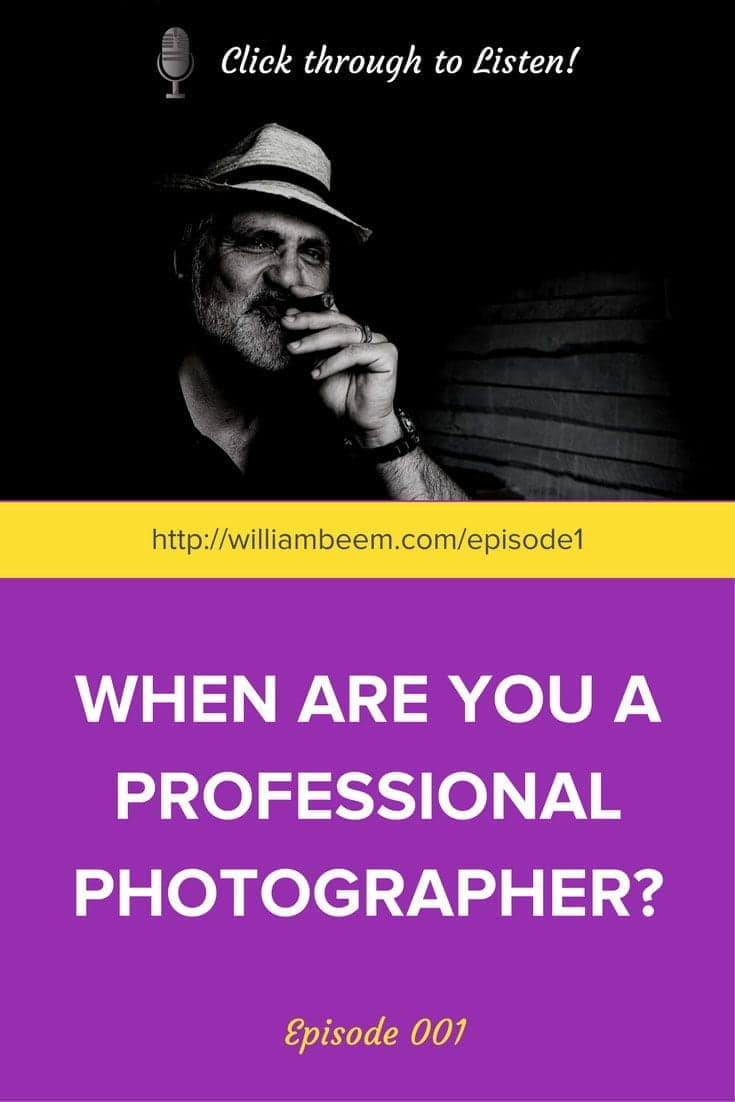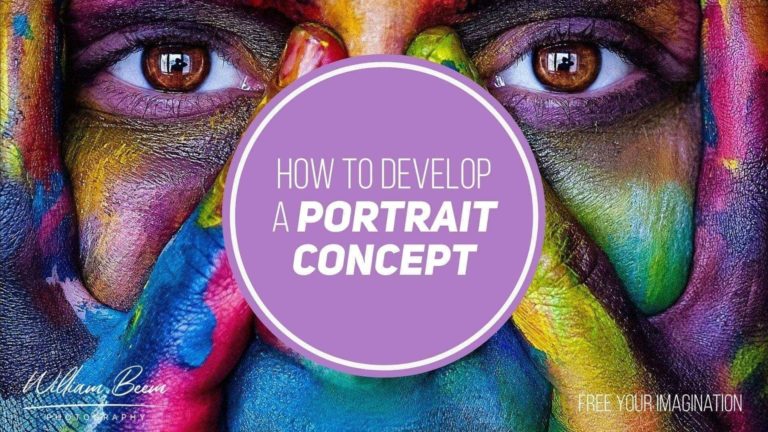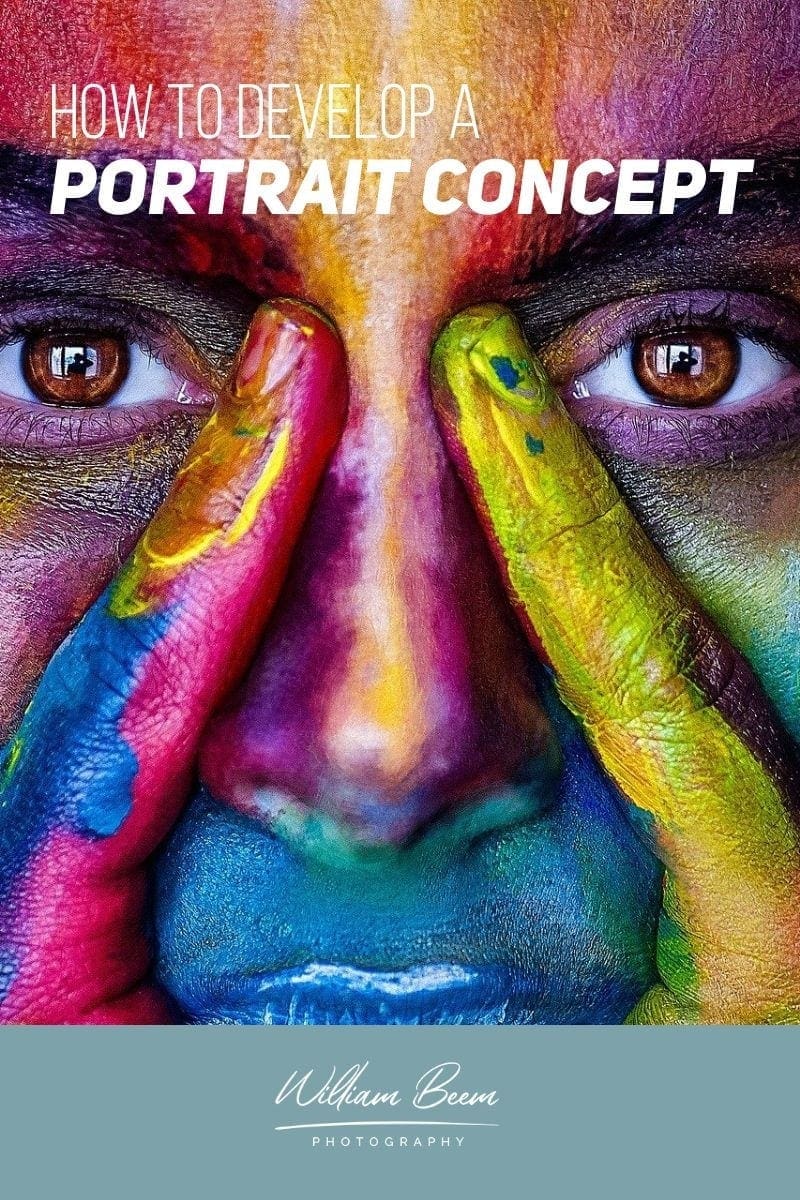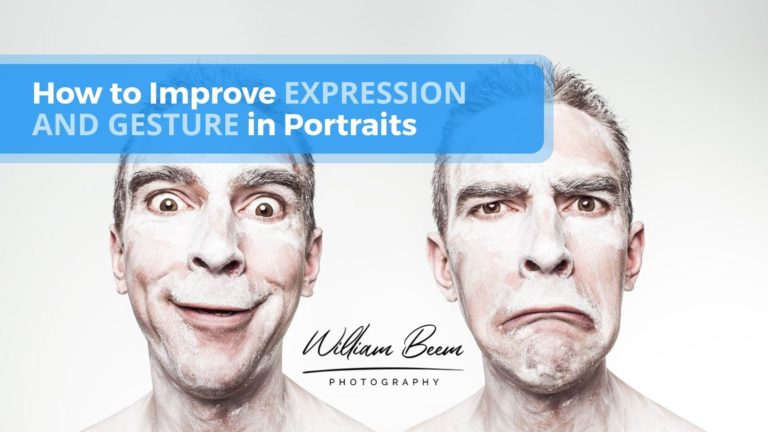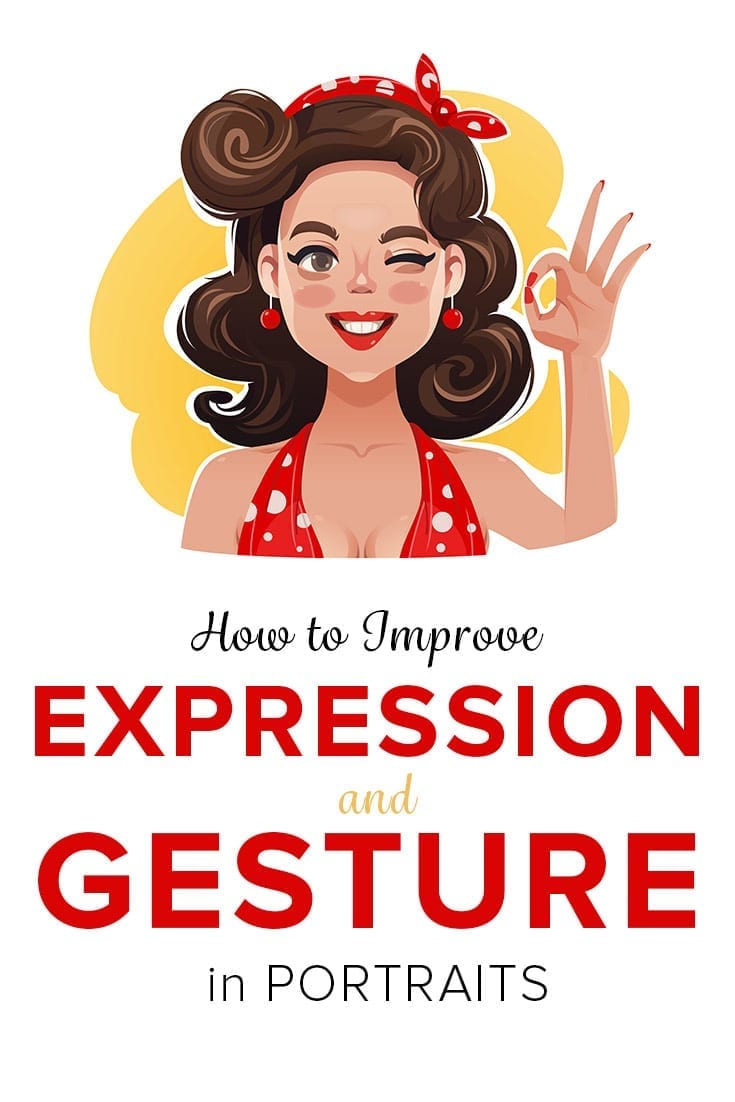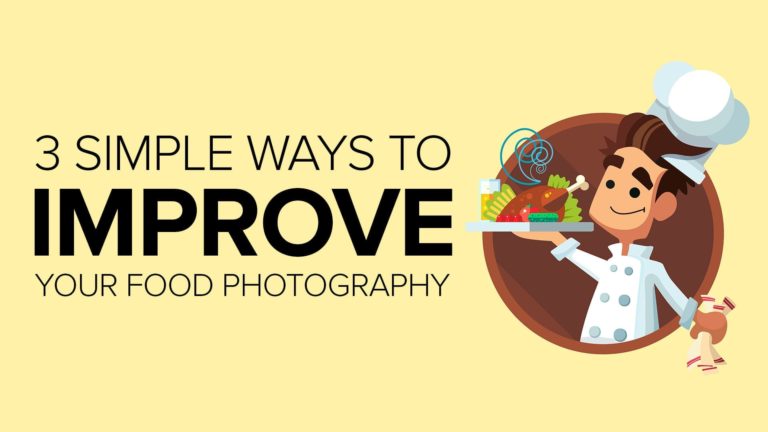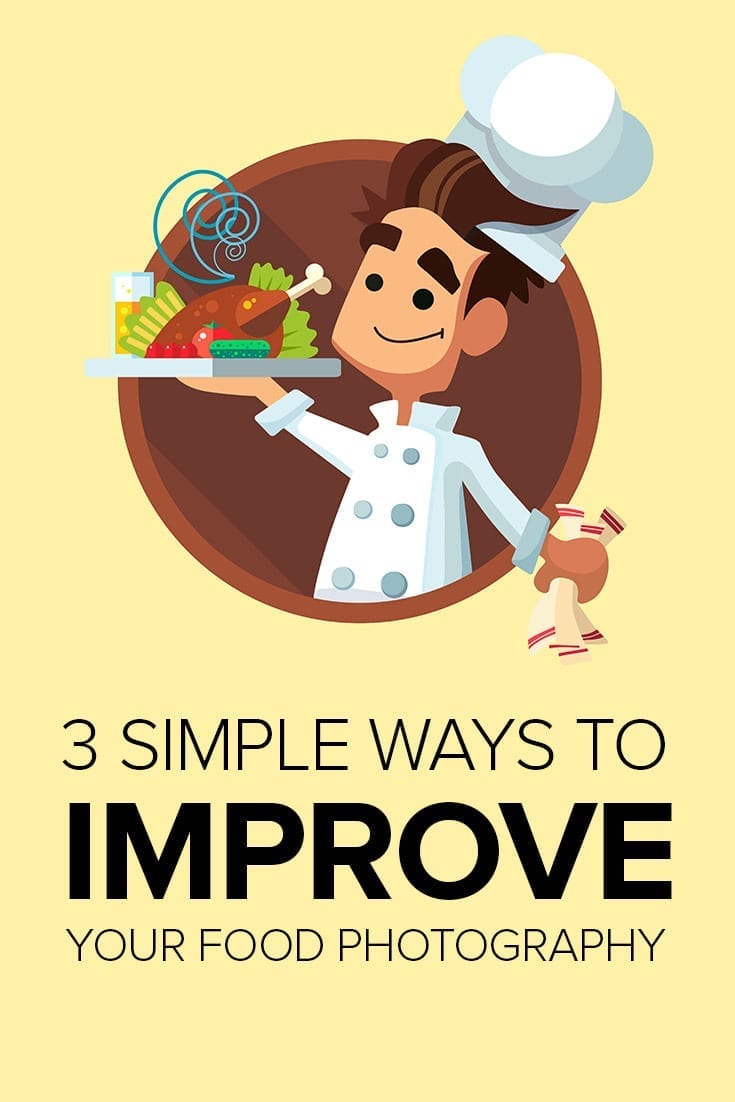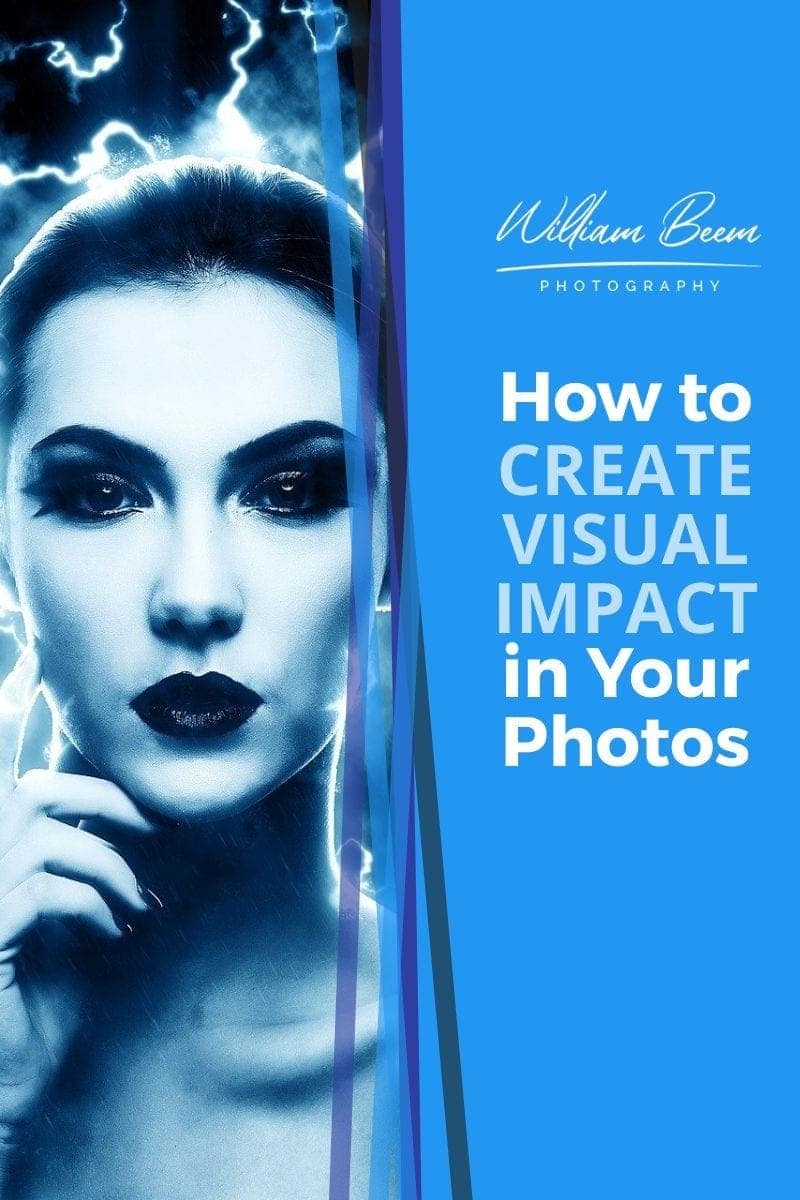Affiliate Disclosure: We earn a commission if you purchase through one of our links at no additional cost to you.
Your Camera Bag Can Make or Break Your Photography Experience
Welcome to episode 43 of The Photo Flunky Show where we discuss some of the options to help you choose your camera bag.
I’ll admit, I screwed up this show a few times, but it’s here with all the warts as we discuss your camera bag options. Lee and I have very different opinions about what makes a good bag. I hope that helps you decide which style works best for you.
We cover backpacks, messenger bags, sling bags, rolling bags and even hard case luggage. They all serve a purpose, but the trick is to match your camera bag to your purpose.
If you’re like me, you’ll end up with more than one bag. If you’re like Lee, one size may serve you well for years without any change.
Related Links
Crumpler 7 Million Dollar Home Shoulder Bag
Crumpler THE KEYSTONE Camera Backpack (Gun Metal/Grey)
Think Tank Airport Takeoff Rolling Backpack
Think Tank Photo Airport International V3.0 Carry On Camera Rolling Bag (Black)
Think Tank Photo Sling-O-Matic 20
Tamrac 5547 Adventure 7 Photo Backpack (Gray/Black)
THE PHOTO FLUNKY SHOW: Episode 43
Welcome to the Photo Flunky Show, Episode forty-three.
Today we are going to be talking about how to choose your camera bag, your camera luggage and generally, stuff that you keep your camera in either for lugging it around or maybe for storage.
William: Hi, welcome. My name is William Beem.
Lee: Hi, I am Lee Beem.
William: And if I am laughing a little bit it’s because I just screwed up the entry! We’ve got two podcasts. There is this one and the other one is called The Orlando Local Show. Apparently I like starting podcasts with “The” and ending them with “Show.” So I had the introductory music and I started playing the right music and then I said, “Welcome to the Orlando Local Show.” And then a flurry of obscenities after that!
So just letting you know, I make mistakes.
Lee: Sometimes.
William: And if you’d like to get those mistakes in writing, we’ve got a free transcript of this show. It’s available at williambeem.com/episode43. Or you can subscribe to the show. Please go to photoflunky.com where you can listen to this show and many others while you are there.
Alright, Lee. Am I ready to do this or am I going to screw up something else again?
Lee: I think people like human people. So if we screw up, that just makes us real.
William: Well I’m as real as you get today.
We decided we wanted to talk about camera bags today because I’ve got so many of them here.
Lee: Yes, some still with tags on.
William: Well, that was a free one.
Lee: Really?
William: Yeah, I won that.
Lee: Oh!
William: So I haven’t used it yet, but it’s a really nice bag.
Lee: I know. It’s really nice and you’ve never used it.
William: OK, if you haven’t visited yet, I’ve got a page on my blog. Go to williambeem.com/resources and there’s a section there for my camera bags. You’ll see most of what I’ve got and most of them are Think Tank bags. The reason this came around or the subject came up is Peak Design is coming out with some new camera bags. They worked with Trey Ratcliff on a messenger bag style that had some really nice features in it, but I wasn’t inclined to buy that one because it didn’t look like it would hold what I would want to take or do something different than some of the bags that I’ve got.
Now that they’ve come out with a few more, one of them is a backpack and I am typically not the kind of person that likes a backpack, but I really like the design on this one and decided to go ahead and plunge for it.
What is it about bags that makes somebody really like a particular bag and yet someone else looks at it and thinks, “I would not have that for anything?”
Lee and I have very different ideas about what makes a good bag.
Lee: Yes. I’m a less is more kind of person.
William: And you’ve really only got the one bag.
Lee: I’ve got the one bag. I have bought many bags and I hated all of them for different reasons. Then I found this one and I love it. It’s quite old, it’s been pretty much taken to hell and gone and it’s absolutely fine. I’ve even made my own little tripod holder on the side by buying some of that fishing line – the really strong thread – and some industrial kind of needle and webbing and clamps and things and I’ve made a little clamp thing that I can adjust and carry my tripod on the side. But I’m not inclined to buy another bag until this one disintegrates.
William: I’m at the other end of the spectrum. I’ve got three rolling bags. They are all Think Tanks. I’ve got another Think Tank bag that is a Sling-o-Matic. I don’t know if they make those anymore, but I really like that one and yet, you hate sling bags.
Lee: I’ve bought three sling bags. One of them I gave away, one of them I don’t know what happened to it and the other one I returned because I just realized that sling bags were never going to work for me.
William: Then I’ve got some that are messenger style bags. I’ve got one and I’m looking at it and I can’t even remember the brand name of it, but it was like a really popular thing almost ten years ago. And it’s a nice, decent bag if you are not carrying too much gear.
But what I’ve actually done with my messenger bag now is I got an insert that I bought and I use bags from Timbuk2 and I’ll put a link to them in the show notes. They don’t necessarily make camera bags; at least if they do, they are not ones that I wanted, but they make really great messenger bags that you can design yourself as far as how they are going to look. Then I just put an insert inside of it so that I can separate my camera body, my lenses and so forth.
That does a great job of being incognito. It just goes over a shoulder and I’m off.
Lee: My bag, although it is a dedicated camera bag, I don’t think it looks specifically like a camera bag unless you are a photographer and you come up and read it closely. There is nothing flashy about it and also, if I don’t have the tripod – which most of the time isn’t attached on there – it just looks like an old beat-up backpack.
William: See that was one of the things I liked about the sling bag. There was a pocket on the side where you can stuff two of the legs in there and it will just go right along with you.
Lee: That’s what I do as well.
William: It works out very nicely and I know other bags have something like that. They might have a little pocket at the bottom or Velcro straps where you can put a tripod on the outside of them. But really, if you are looking at camera bags, you’ve got to think about what your purpose is for them and what kind of stuff you are going to put in them.
That’s why I’ve got so many different bags, because that purpose and the contents kind of change.
Lee: Yes.
William: You were talking about when you go out sometimes. Are you going to carry more than just your camera gear? You are also going to put a purse or a wallet or something else in there.
Lee: I want to have somewhere to put my wallet. Also, if I don’t have my camera on me, which truthfully if I’m going out with the camera I probably do most if not all the time, but if I want to put my camera down, I want it inside the bag.
Also, I never go anywhere in Florida without a cardigan. I cannot stand being cold. I would rather roast and sweat than be cold. It is always freezing in the air conditioning, so there is always a cardigan in my camera bag.
William: And I love my air conditioning.
Lee: Yeah, so to stay with my husband I have to have a cardigan with me.
William: We suffer for each other. When we went out to the party at Disney it was just muggy and hot outside and you did not want to go in the air conditioning.
Lee: No, it was just horrible inside. It was perfect outside.
William: It was horrible outside. And I had that sling bag. I’m getting off topic here, but what I’m looking at is for the purpose and contents. It’s really based on what you’re going to do.
So we kind of broke it down. The rolling bags are the ones that you are taking more gear than you are going to probably use at one time. Maybe if you are traveling you need to have a few options with you. If you are going to a studio shoot you just want to go with it, but particularly if you are going through an airport, it’s much nicer to have a rolling bag than lugging things over your shoulder.
There are bags that you take stuff with and there are bags that you maybe store your gear with, and then there are bags where you’re going to be out in the field. So in other words, you’re actively shooting, but you still need to have more equipment with you. So I think that’s where your backpack comes in or my sling bag or messenger bags.
Lee: Yes, well that’s why I bought the bag I bought. I realized that the only time I want to use the bag is not for storing stuff; I had other ways of storing stuff inside the house, but I wanted something where, when I was using the camera, it needed to hold the gear that I was going to take on any given day.
William: The other difference is one, your gear is smaller than my gear and you don’t have as much as I do.
Lee: I don’t.
William: I mean, we share now, but when you bought the stuff, you weren’t trying to say, OK am I going to take these three lenses plus a couple of bodies and flashes or whatever.
Lee: I’ve never had the need to take so many. I think most of the time you can get away with two or a maximum of three lenses, including the one mounted to your camera. You should be able to cover yourself for a given day. I cannot imagine many situations, or any for myself, where I needed to take more than three lenses and that was the extreme.
William: See even that. You just mentioned mounted to your camera. When I put my stuff in my bag I never want to have a lens mounted to my camera. I am afraid of dropping it or bumping it or something and having some kind of pressure twist that lens on the camera mount.
Lee: See, you worry more than I worry.
William: I do.
Lee: I think it’s less likely for anything to happen to my stuff than for somebody who worries about stuff, because I don’t know … I just think sometimes your biggest fears are more likely to be the things that go wrong.
William: Yeah, that’s because I was raised by a mother who was afraid of everything and a father who would do anything. So I worry about everything. I’ll go out and do it, but I’m still worried the whole time. Something is going to happen with my gear. It’s either going to get lost, stolen, damaged or whatever. I’m worried about it the whole time. And it’s never happened to me.
Lee: No, I’ve never had anything. I’ve had accidents with the camera, but no harm has come of it; nothing has actually got damaged.
William: I’m even worried about dust. I mean right now we are sitting at my desk and right to the side of us we have two prime lenses sitting in the lens bags that came in the box, just so the dust doesn’t get on them, in case one of the dogs shakes off or something like that.
I have bags that go into other bags. Lee is not saying anything right now because she is laughing at me and she’s trying not to make any sound, but she is just turning beet red laughing at me.
Lee: Dust?
William: Dust. Yeah, well am I insulting housekeeping?
Lee: Oh that’s OK.
William: It’s alright. We’ve got a couple of dogs here and one of them really loves to live in the dirt so she brings in a whole lot of mess. Enough of that. Why don’t we get down to the categories? And we’ll start off with your favorite: backpacks. Why is it, out of all the different types, you really love having a backpack?
Lee: I like to have a backpack because if I’ve got a lot of stuff in there or if I have heavy stuff in there, I’m not a very big person and I want to be able to distribute the weight evenly across my shoulders. Now if I’ve got the camera on me, I’ve got a shoulder strap on that so it’s going across one shoulder. I typically carry the backpack on one of the straps, but usually you are never going to have the same or equal weight balance between the camera and the bag with its contents.
So I like to be able to switch over and shift things. I don’t really mind whether my camera is on my left or on my right shoulder. It doesn’t make a different to me and likewise with the backpack. So I find that it’s nice to balance things out.
William: There are a couple of reasons I didn’t really go for backpacks. One is when it’s on my back it’s not really accessible. I mean, I’ve got backpacks. There is one over in the closet that is a really wonderful backpack, except for the fact that I hate it.
It addressed one of my security concerns. You don’t open it if you’re wearing it, from behind you. It looks like a solid piece of material there. The way you have to open it is to take the thing off and then it unzippers inside where the arm straps are, which means it’s just a pain every time that you are out and you want to do something. You’ve got to stop and take that thing off.
One of the things that attracted me to the Peak Design backpack that I ordered is you could very easily drop that on one arm, slide it in front of you and there’s a little compartment right there where you can pull a camera or something out of it. It was very accessible and would still distribute the weight the way you were talking about with the backpack.
Lee: You see, to me, being able to access something without putting it down has never been a consideration. It just doesn’t worry me. I could not imagine trying to take something out of my camera bag without wanting to put the bag down anyway.
I tend to stuff things in; I am not that careful. I figure I don’t drop my bag, I don’t throw it around, somebody running into me is not going to break anything in there, so when I’m done with something, I literally just stuff it in and close it up. So I want to put it down when I haul things out so I don’t send anything flying across the ground.
William: You see I am prone to falling. I told you about that time I went to Alaska. One of the things I did in Alaska was I went on this little trail hike. We went over some areas that were wet and mucky and I fell flat on my butt three times in probably three miles. The guide actually called me out as an example to the other people on the hike: this is the proper way to fall. Make sure you land on your butt. It’s padded.
Lee: Like a boss.
William: OK, I’m a thought leader here. I’m landing on my butt and my jeans are just filthy dirty; ruined from landing in that muck. But I am prone to falling.
Lee: No, you’re just not used to the ice.
William: It wasn’t ice. It was mud. We hadn’t gotten to the glacier yet.
Lee: Oh!
William: No, this was just like walking in the mud. With rocks.
Lee: I thought it was icy.
William: I was actually fine on the ice, but I’m getting off topic here. I walk on a slippery surface and I fall. Now in Utah I was walking on ice and snow and I fell on my butt several times there, too.
Lee: The camera survived.
William: The camera survived. I learned how to hold things up in the air as I fall. Even when I was in Barbados at our friends Niki and Zoli’s wedding party, I was out in the ocean and a big wave was coming up and it knocked me over, but I held up my cup of rum punch.
Lee: Good for you.
William: Three times I got knocked over by waves in the ocean, but I did not spill a drop of that rum punch.
Lee: Good for you!
William: I didn’t know there was rum in it at the time, but after the third time I said, man this stuff must be really important because I’m protecting it.
Anyways, that’s why I want good, solid bags. You are saying you put stuff in there just anywhere. I want a place for everything and everything in its place
Lee: Yeah, I mean when I get back and when I leave the house, I like to have things organized and know how to pull them out, but truthfully, I never carry that much stuff with me. And I’ve also got a separate compartment in mine for non camera things and I like that. It’s very small so it means that I am not obligated to carry stuff for kids. I’ve been through that.
William: See, I never had to worry about that. All the stuff in my bag was just for me.
Lee: Trust me. Mom’s got the bag, mom carries everything. It didn’t work like that in our house.
William: Of course I did have one bag that looks suspiciously like a diaper bag, which nobody wanted to steal.
OK, so the one that looks like a diaper bag – we actually just paused to go get it so I can take a look at it – and I bought a couple of these bags. The brand name is called Crumpler. I think they are made in Australia. They are very well made bags, they are very solid, there are good compartments inside of them and a couple of little pockets, but I went through them. I started off with Crumpler when I got my first camera. It only had one lens with it. As I started getting more stuff, I got a bigger one; 6 Million Dollar something or other – I forgot the name of them. And even the backpack I’ve got is from Crumpler. They are solid, heavy duty and everything with a place.
I kind of outgrew it and that’s the reason I stopped using these bags. You can look at this thing. It’s 7 Million Dollar Home For Your Camera, I think, is what it’s called, and it looks like a diaper bag to me.
Lee: Funny, one of the few bags I’ve had stolen from me was a diaper bag! It’s crazy.
William: That’s not good. I figured great. Let it look like a diaper bag. No-one is going to want to take it and get whatever is inside, but maybe I underestimated people’s need for diaper bags.
Lee: Well, usually you have the clean stuff in there and you put the dirty stuff somewhere else.
William: I’ve never had a baby. I didn’t think of that.
But even the one I was describing where you open up the zippers from inside where the straps are, is from Crumpler. They are solid, well made bags. I don’t have a complaint with them except for they just don’t really work for me right now.
Then I went ahead and moved on to Think Tank and the first thing I did was move from that backpack over to a sling bag. I think it’s on my resources page at williambeem.com/resources. It was called a Sling-o-Matic and they made them like a Sling-o-Matic 10, 20 and 30. I’ve got the 30. To me it is wonderful. It’s very well made and solid, just like everything from Think Tank is really sturdy.
It had pockets where if I wanted to, I could carry my tripod. It fits kind of like over your one shoulder and then the bag is on your back. So it distributes the weight nicely and you can slide it. The reason it’s called a Sling-o-Matic is because you can slide that shoulder strap from one side to the other. So if you want it on your right shoulder or your left shoulder, you can just quickly and easily move that. Then it will sling around in the front of you and you open the zipper pocket and you’ve got access to everything that you want, right there.
Lee: These always looked so appealing to me until I started looking into them and I tried one to see when somebody else bought one and it just wasn’t comfortable for me.
William: Oh, this thing was comfortable and also, there is another pocket on the back that fits a 15 inch laptop. I’ve got a Macbook Pro that fits in there. Everything I needed to take with me fitted neatly in there so I could put in my body, a couple of lenses; I had a power supply and other things. And I could just take off and go.
Not necessarily if I needed lighting equipment, but you can still get a flash in there and you could fit a 70-200 mm lens in there and it works just right. The only thing you’ve got to be careful of is when you sling it on your back, it you want the heavier things towards the bottom so they don’t slide around.
Lee: I think that is an example of how your different needs dictate the type of things. For you, you need to have enough space for all these things. I don’t take these kinds of things with me. In fact, the beauty of my small bag is that it doesn’t tempt me to take more than I need. I rarely use the second lens and now almost never a third lens as far as I can think.
William: There was one other benefit of this. When you sling it around the front and it’s in the horizontal position, it made a great elbow rest. Photographers get into low light and you just are trying to get your grip on the camera just to hold it as steady and stable as you can. Suddenly I’ve got a platform here that my elbow can rest on it and I can hold the camera up to me and it’s still attached to me, but it’s much more stable than if I didn’t have it there. So it just bought me a couple of shutter speed settings that I could have something a bit more stable.
Lee: Hidden gems.
William: I love this bag and that’s why I’ve still got it and occasionally still use it.
The thing I don’t like about this one or backpacks is if it’s really hot and muggy and I’m carrying something on my back, I’m the kind of person where I tend to perspire back there and it’s just a sticky, unpleasant feeling. So I don’t know much of a way around that, other than to go to the next topic, which is a messenger bag and have something maybe over your shoulder but hanging on the side.
Lee: That’s not comfortable for me. I’ve got kind of bony hips and I find that things that sit around there, especially if they are heavy, hit against the bones and I end up feeling quite bruised afterwards.
William: Well, I found that a messenger bag was good for walking about if you need a bag to carry a couple of things. Mostly I am like you now. I don’t even want to take a bag with me. If I’m going to do a walkabout or something like that, I would rather just take my camera and one lens on a strap. Maybe even my tripod.
I’ve got a post about how to carry a tripod that just came out; actually, it was a few years ago and I’ve refurbished it for now because I have used the same strap for a long time. But it’s an easy way to carry your gear without having to deal with a bag and like you said, a lot of times you don’t really bother to change your lens.
Lee: I don’t.
William: If you plan properly for it. Every once in a while you need to; especially if you are going on travel someplace and it’s a once in a lifetime type of trip and you don’t want to screw it up because “I didn’t bring the lens for that.”
Lee: Yeah, exactly.
William: So you are willing to suffer and lug stuff around because you are not going to be back there and you just need to get the shot.
Lee: Yes.
William: And you don’t even know what it is yet.
Lee: Exactly!
William: So for situations like that, that’s why I would look at either a backpack, a sling bag or a messenger bag.
The other ones that we were talking about, and for me these are all Think Tanks, are rolling bags. I’ve got a few of them. I’ve got an Airport Takeoff … they are all Airport series, I think. My favorite one now is one that still has the tag on it, but I haven’t used it yet. It’s got four wheels on instead of two.
These are definitely first world problems, but when you are going through an airport, it’s so much nicer to glide your luggage on four wheels and just move the bar than it is to have to lean it; especially when it’s full of heavy gear and lug it behind you.
Lee: I like to lean it.
William: Do you really? Even my full size suitcase now, the last time I got one of those, has got four wheels on it. And I said, oh yeah! This is nice! Especially when you’re going over those nice tile floors in an airport and it just glides right along.
Lee: Oh they do. They move much more easily and fluidly than the two wheel ones.
William: But you’ve traveled a lot with your camera.
Lee: Yes
William: And you didn’t go off and buy a special rolling case for it.
Lee: No, I figured I had the dedicated bag I wanted to use. I mean, if you buy a special rolling case and then you’ve got to go out for the day with your camera on vacation or on your trip, you are going to need a different way to carry it. So that means you need to buy two containers for your camera. Then you would also need luggage somehow to get your own stuff over. So I bought a really cheap – you know those stores where you don’t go in there?
William: Like Dollar stores or when you’re in the UK, Pound stores?
Lee: Yeah, well not quite, but similar type stores, but I bought luggage from there. I bought the roll aboard bag and it was pretty inexpensive. Actually it was very inexpensive! It has done great. It has done about 10 or 11 international flights. It’s absolutely fine. I think one of the zippers sticks a little bit, but I bought the camera bag and my carry-on roller bag was just filled with camera stuff, which was all inside the camera bag. Then I could slide the laptop in there as well.
So really, that gave me space for it.
William: Exactly. We both serve the same purpose. When you are traveling on an airplane, you never check your luggage with your camera.
Lee: No. Well that was my thought as well.
William: I mean don’t get me wrong. I understand that there are some people who are professional photographers and they are going to have a lot more gear. They are not going to be using rolling camera bags or something like this for what they do. If they’ve got a lot of gear, they might be putting it in Pelican cases or other really large scale bags that are industrial size and they are not going to go up to the counter with those things. They are going to go and check in, probably with a sky cap, and then just get receipts and say this is my stuff, here is everything. I know some guys have probably been going to the same sky cap for years in their home town. Just get their camera gear checked in.
To me that is a scary case, but then again, that is also why you make sure you have insurance if you are professional and you are sending things through that are going to go in the belly of the plane.
But for most of us, you want to have that gear with you and not checked.
Lee: Yeah, real people want to keep stuff with us.
William: Yeah, because no matter what lock you think you are going to put on that, if it’s a bag and it has a zipper, all you need is a ballpoint pen to open that zipper up and then take what you want and then zip it back around and you’ll never even know that it was opened up.
Lee: Yep.
William: Unless, like I said, you get a hard case like the Pelican cases and I’m sure there are probably some other brands. Those are hard, rugged plastic and they will have foam inserts inside and you can custom fit your gear in that. Maybe a gorilla can toss it around and you’ll still be OK; which is kind of what it’s going to be like when it goes through baggage handling.
Lee: I was going to say, if baggage handling … that is like the ultimate test for anything. If anything can get through baggage handling without breaking, it’s indestructible!
You saw my hard shell suitcase last year in March.
William: Oh, yeah. And I’ve been on a plane a number of times when I’ve watched the baggage handlers. They don’t know what’s inside. All they know is the bag has got to go here so they just toss it up here on the ramp and they toss it inside.
Lee: It is just thrown. If you’ve ever watched …
William: Literally, yeah. I’ve seen some people take more care than others. There are some that seem really less concerned. For the most part I haven’t seen people trying to abuse anything. But it’s luggage handling. Things have got to move on a schedule and they don’t have time to be dainty with it.
Lee: No, they don’t, and I get that. But some of the stuff, well ….
William: So that’s what we are saying. If you are going to be flying and you need to have your gear with you, backpack, sling bag, messenger bag, rolling bag; all those things can fit in an overhead and you should take them with you.
If you are going to be throwing stuff in luggage that you’ve got to go in the belly of the plane, make sure you’ve got some insurance on them and if possible, get some hard case luggage, like a Pelican case.
We’ve given you a couple of perspectives here. In my case, I’m going for multiple bags. Especially if I’m going on a trip, I’m going to have one for moving the stuff back and forth and it’s also good if I’m going to a studio shoot or going to a location shoot. I don’t necessarily need a messenger bag to take with me, but if you are traveling, I want to travel probably with a rolling bag, if I’m going to be taking a number of lenses with me.
And then having another messenger bag in my suitcase, I’m probably packing that full of toiletries and clothing or whatever else, just to make the most of the space. But you are not going that way. You are just as happy with getting an inexpensive roll aboard and throwing everything in there.
Lee: Why spend the money twice for two dedicated things that serve the same purpose? I mean you have to have both, when you can have one.
William: I still see it as I’ve got a dedicated rolling bag.
I’ve got three dedicated rolling bags. I don’t need three, but I’ve got them.
Lee: Alright, so you’re using a dedicated, rolling bag, you fly with it, you get to … you’re going to Las Vegas and now you want to go out for the day and take some photos and you are going to have to change lenses, so you are going to take a spare lens and a few things with you.
Now you need another bag for carrying that?
William: But we are both taking them inside of a suitcase.
Lee: Yeah, to me it’s just an extra thing to pack. I don’t like to have to pack things unnecessarily. To me less is more. I take as little as possible.
William: I understand that and that’s just really what the difference is. How are you going to choose which camera bag you want? You need something that’s going to function for what you’re going to be doing and where you’re going to take it.
You’ve got a budget in mind though. Some of these camera bags I bought, I didn’t buy them because they were inexpensive. I bought them because they were solid and would protect my gear and to me, I could use them for many years and they are still ready to go for a lot longer.
I was afraid that maybe a cheaper roll aboard like the one you were talking about, the wheels would fall off or something bad would happen. Or it would be just clunky to get around.
Lee: Yeah.
William: That’s not really been your case though.
Lee: No, it hasn’t. They are not perfect. You can feel the difference if you take a high end one. I have got a more expensive one that I think Tové is using now and you can feel the difference in quality when you pull them along, but it served its purpose and most of the time you are just rolling it along the ground in an airport and that’s it.
William: And that’s really what the difference is. What do you want? What are you going to budget for?
I was honestly, at the time before we met, I had the money to throw around on camera gear and it’s lasted me. It’s good that we have it for our use and I’m happy that I’ve got it, but I am also kind of in the mind that I want to buy something once and just be done with it. Then apparently that didn’t work because I bought a lot of different bags.
Lee: I think with bags your needs change. I learned that with my first camera bag. As soon as I got a new lens, the camera wouldn’t fit into the bag because I just had the one. And the camera wouldn’t fit into that bag, so I got another bag and then I changed the camera body and all of a sudden there was another problem. So those were the smaller bags, more like the …
William: Well that’s like my series with the Crumpler. I had the Nikon D70, which is a rather small camera and I went to a D200 and now I’ve gone up a couple of times so I’ve got my D700 and D800 and those are older camera bodies now. On top of that, not only are they larger cameras, but I’ve also put a battery pack on them.
And then a little frame on the outside for mounting on the tripod. So just the size of what I’m putting in there, and even the lenses I’ve got … what’s the 14-24 mm, the 24-70 mm and the 70-200 mm; kind of a little trifecta of zoom lenses. So if I want to take all that with me that’s not going to fit in these old bags.
Lee: Yeah, you see I think with the camera bags I kind of learned from early on, even if I didn’t fully understand it, that my needs were going to change and that there wasn’t going to be a long term camera bag. I was going to be buying them. So I figured I don’t need to spend a whole lot of money on it if I’m going to have to do this recurrently, which really would have happened.
William: Absolutely. I totally get it. I am not disappointed that I bought the bags that I’ve got, because I’ve got some really cool bags and here I am buying yet another one.
Lee: But I’m the cheap one.
William: I don’t think it’s necessarily cheap. I mean you certainly didn’t spend the same kind of money on bags that I did, but yours is working for you just fine. Like I said. I wouldn’t be happy with your bag.
Lee: No, you wouldn’t.
William: Things are too disorganized with what you’ve got for what I want.
Lee: You wouldn’t be happy with my tripod. He doesn’t like my bag …
William: Yeah, I pick on her.
Lee: He likes the really good stuff and like I say, does it serve its purpose? Could I get the same results? OK. I’m good.
William: And that’s really what it is. I am finicky about where I put my stuff in the bag and that’s why I’ve got so many. I’ve got little compartments and everything goes in its place. And you’re thinking, it’s a bag.
Lee: The other thing is too many compartments. I specifically did not want a bag with lots of compartments and I’m the same with a purse. The smaller the better. Because the more compartments, the harder it is to find something when you need to pull it out quickly. Is it this one or that one? Oh, yeah, my bag’s got ten different pockets and it takes me fifteen minutes to find where the memory cards are. That doesn’t help me.
Maybe I’m just disorganized.
William: You seem to make it work.
Lee: It works for me because it’s simple, like me.
William: And really, that’s kind of what I want to get down to. We knew that we disagreed with each other on this topic and I wanted to be able to present a couple of different sides of the story.
What bag is right for you is really dependent upon you. What kind of gear do you need to carry? I wouldn’t necessarily worry about growth too much because growth is going to happen or it’s not going to happen and I would just say get the bag that works for your gear right now with maybe a little bit more room like carrying your cardigan because it’s so cold in the air conditioning.
Then just decide, do you want a bunch of compartments or do you want something where you can just throw stuff in there and grab it and go?
It really is a personal choice. I am happy with everything I’ve got. Lee is perfectly happy with everything she’s got.
Lee: I am.
William: So I hope this helps you. We’ve kind of gone over a few different things and I’m glad that we got through this without really slapping each other over the bags.
Lee: No, we don’t slap each other. But it comes down to you need to buy the bag that works for you. Stop worrying about the brand names and how much it costs or what it does if it’s going to work for you.
Unless somebody else is getting paid to walk around carrying your stuff for you, nobody else gets a say in the bag that works.
William: Look, if we get down to the common denominators, it’s got to be comfortable for you to carry, because if the straps are cutting into your body, whether you’re carrying a sling bag or backpack or anything else, or even if you’re carrying it in your hand … if the straps are cutting into you, you’re not going to want to take the thing with you.
Lee: That’s true. And I had one where the strap wasn’t cutting in, but one of the early sling bags I bought kept sliding. So you can adjust it and I’m not terribly tall and this thing kept extending so as I was walking with the weight, it was just getting longer heavier and I had to keep pulling it in again. It was just terrible.
William: And that is what I was going to say. It’s got to be comfortable. I think it’s got to be durable and whether you want compartments or not is apparently a personal decision, although the right answer is compartments.
And finally, if it’s going to be a rolling case, do yourself a favour. Get four wheels. I love having four wheels on that bag now.
Lee: And you should listen to the husband because he’s always right.
William: Oh, well that’s a good place to close.
Thank you very much for listening to the Photo Flunky Show. We really appreciate you.
As I mentioned at the start of the show, and I always mention at the end of the show, you can find the show notes available at williambeem.com/episode43. And we will have a transcript of this show there for free.
We would really love it if you would subscribe to the Photo Flunky Show. There are links at photoflunky.com. You can subscribe on iTunes, Google Play Music, Blubrry and Stitcher Radio. And you know what? If you’d like me, just go ahead and send you the links to subscribe to the show, why don’t you go ahead and subscribe to our blog. There is a link there as well and a little form to fill out. Just put in your email address, we’ll send it to you and then every time you get a notice about a new podcast episode; a kind of once a week digest. It will have links there to subscribe.
Take care, everybody.

